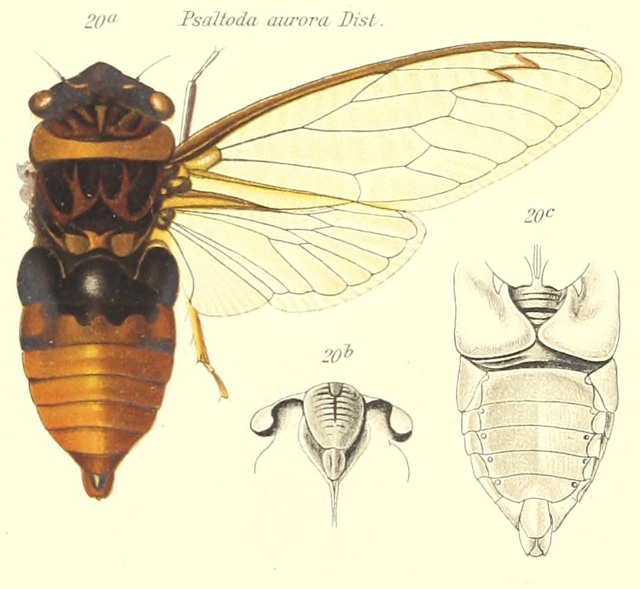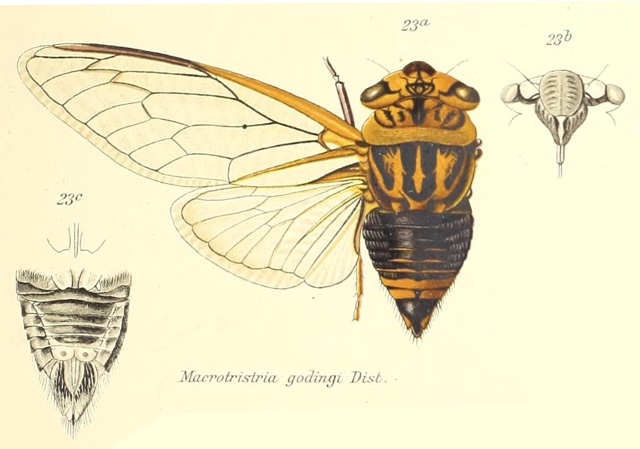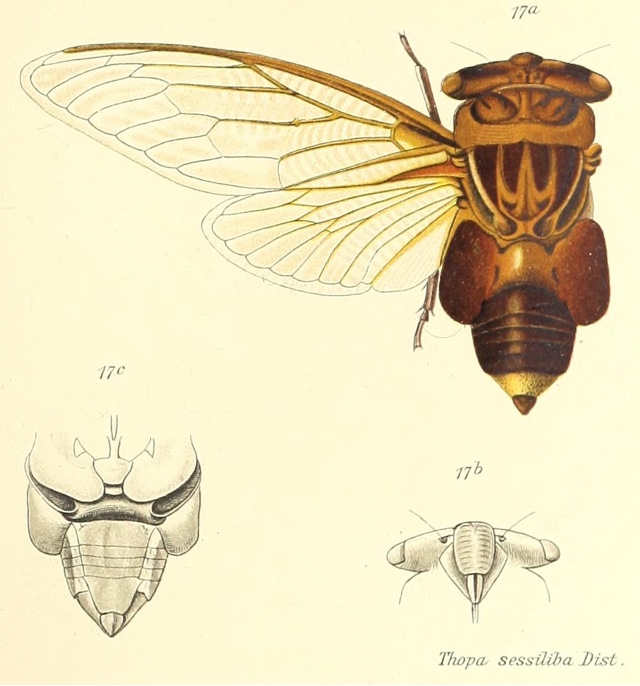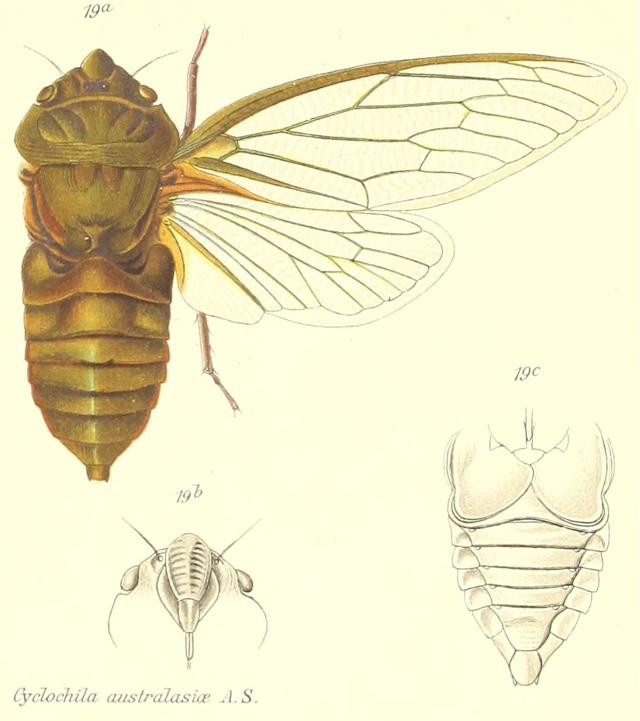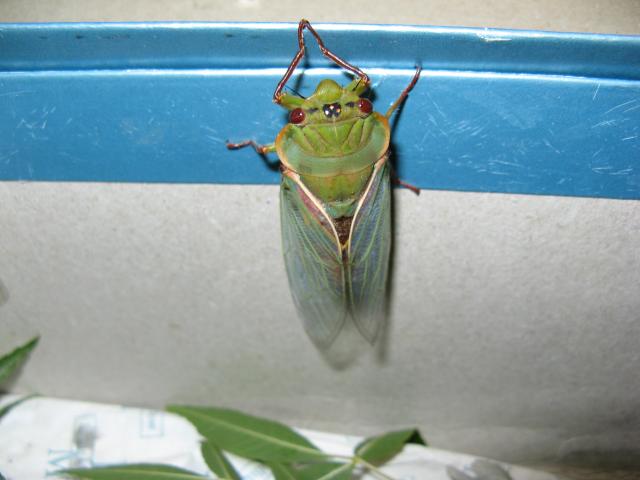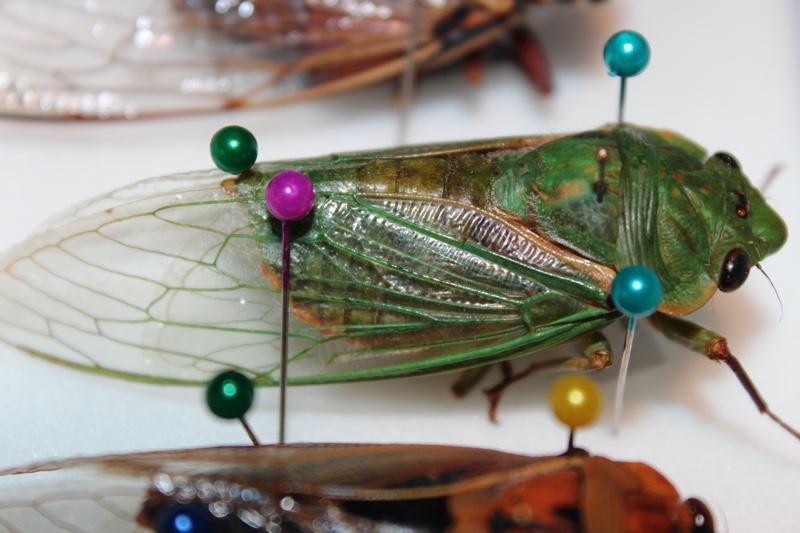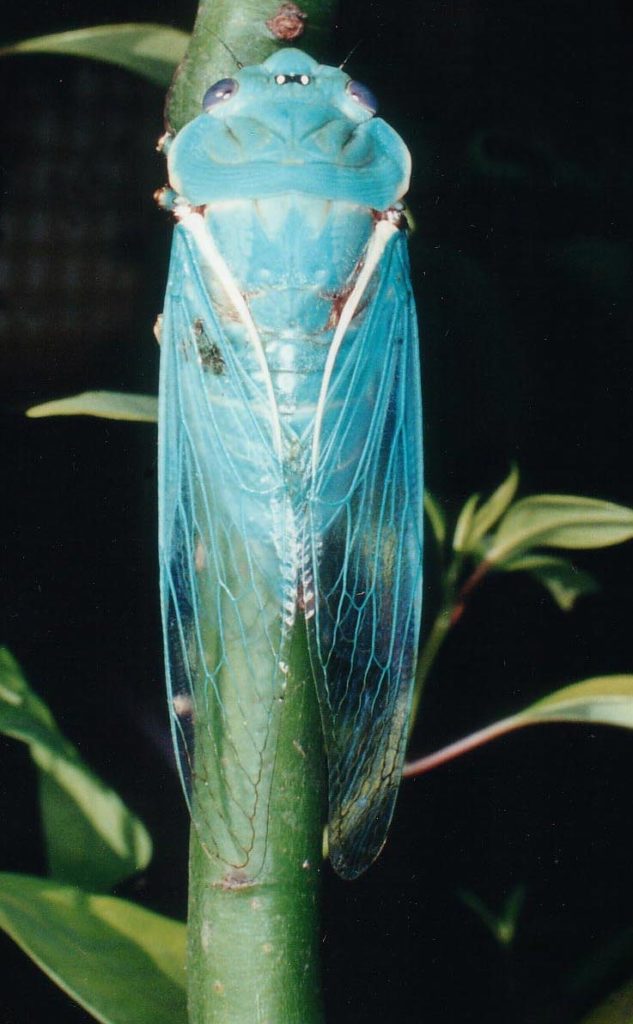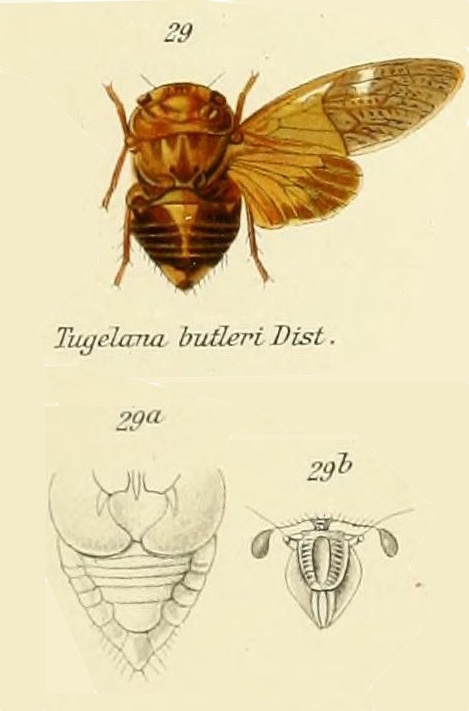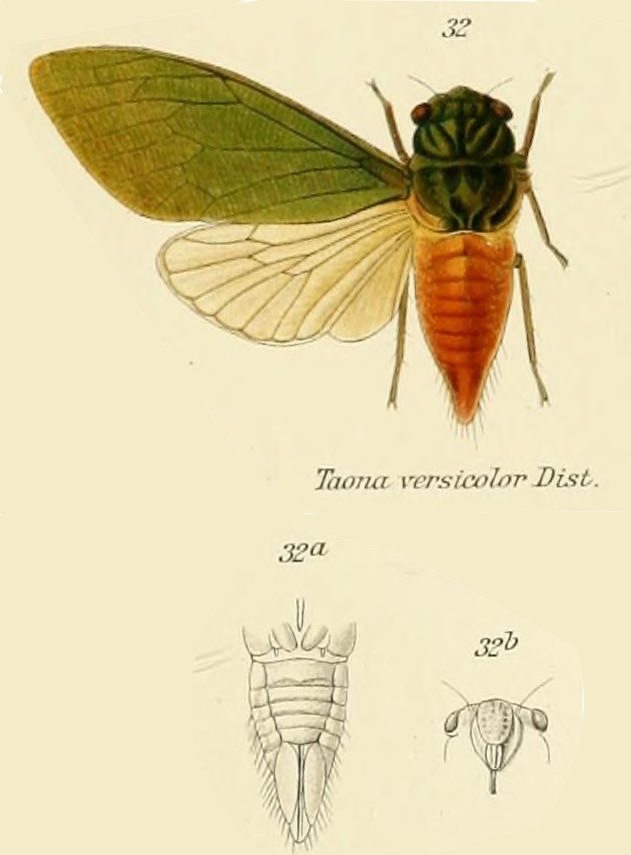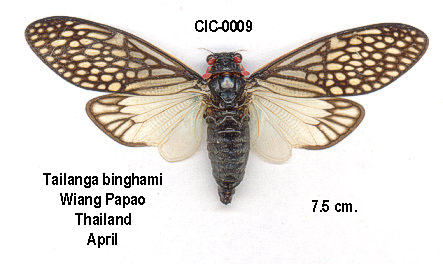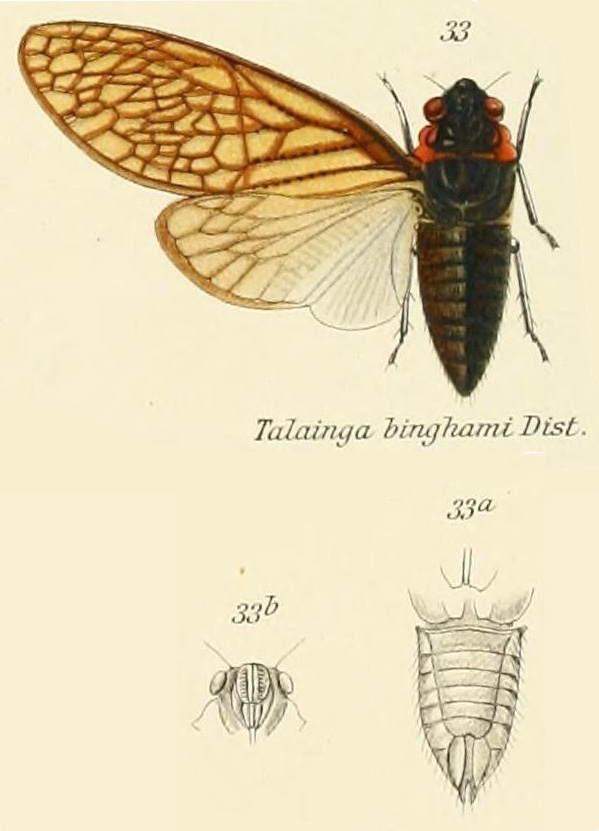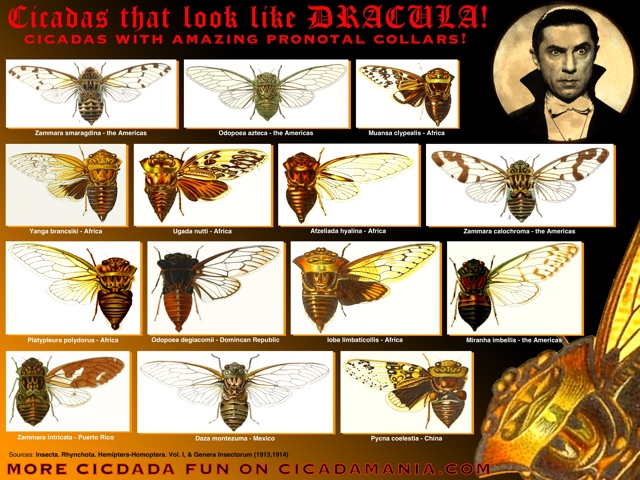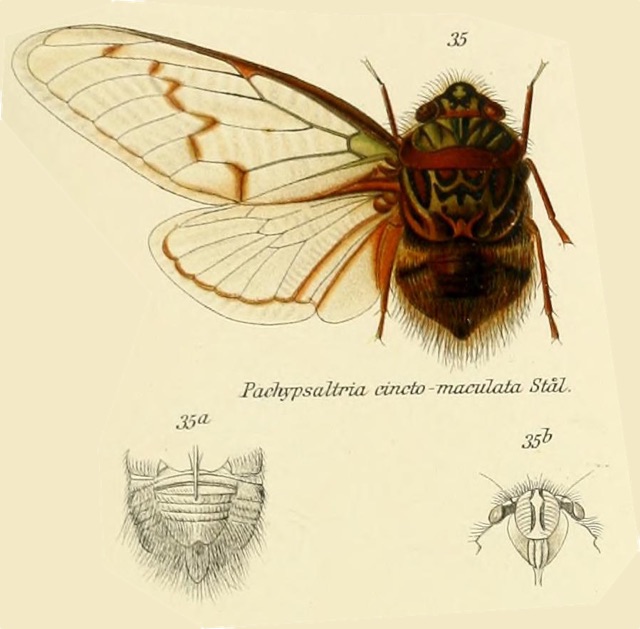Antankaria signoreti (Metcalf, 1955) is found in Madagascar. It was formerly known as Antankaria madagascariensis. Yes, its species name has changed since 1913.
Scientific classification:
Family: Cicadidae
Subfamily: Cicadinae
Tribe: Cryptotympanini
SubTribe: Cryptotympanina
Genus: Antankaria
Species: Antankaria signoreti (Metcalf, 1955)
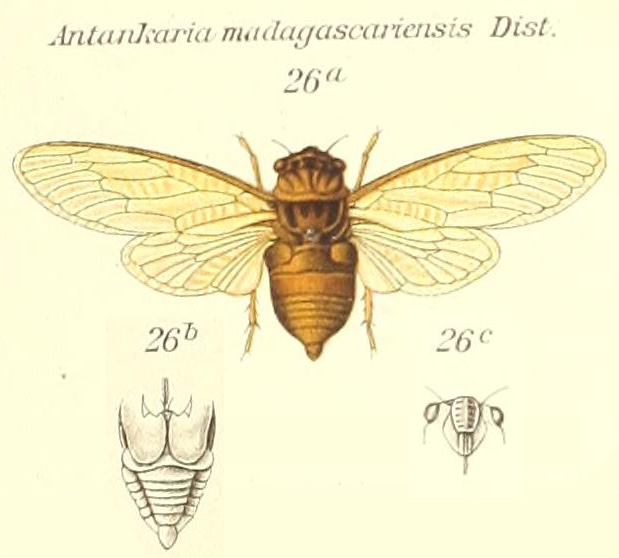
The image says Antankaria madagascariensis, but its newest name is Antankaria signoreti.
Antankaria genus description by W. L. Distant:
Characters, — Length of head about half the breadth between eyes and (including eyes) as wide as base of mesonotum; eyes circular, globular, moderately directed upward; pronotum a little narrowed behind eyes, about as long as mesonotum in front of the cruciform elevation; abdomen longer than space between apex of face and base of cruciform elevation; rostrum reaching posterior coxae ; anterior femora strongly toothed beneath; opercula in type not passing the base of metasternum; tegmina and wings talc-like.
References:
- The illustration and genus description comes from the journal Genera Insectorum, and a specific article from 1913 by W. L. Distant titled Homoptera. Fam. Cicadidae, Subfam, Cicadinae. Read it on the Biodiversity Heritage Library website.
- Current species name verified using Allen Sanborn’s Catalogue of the Cicadoidea (Hemiptera: Auchenorrhyncha).
.
